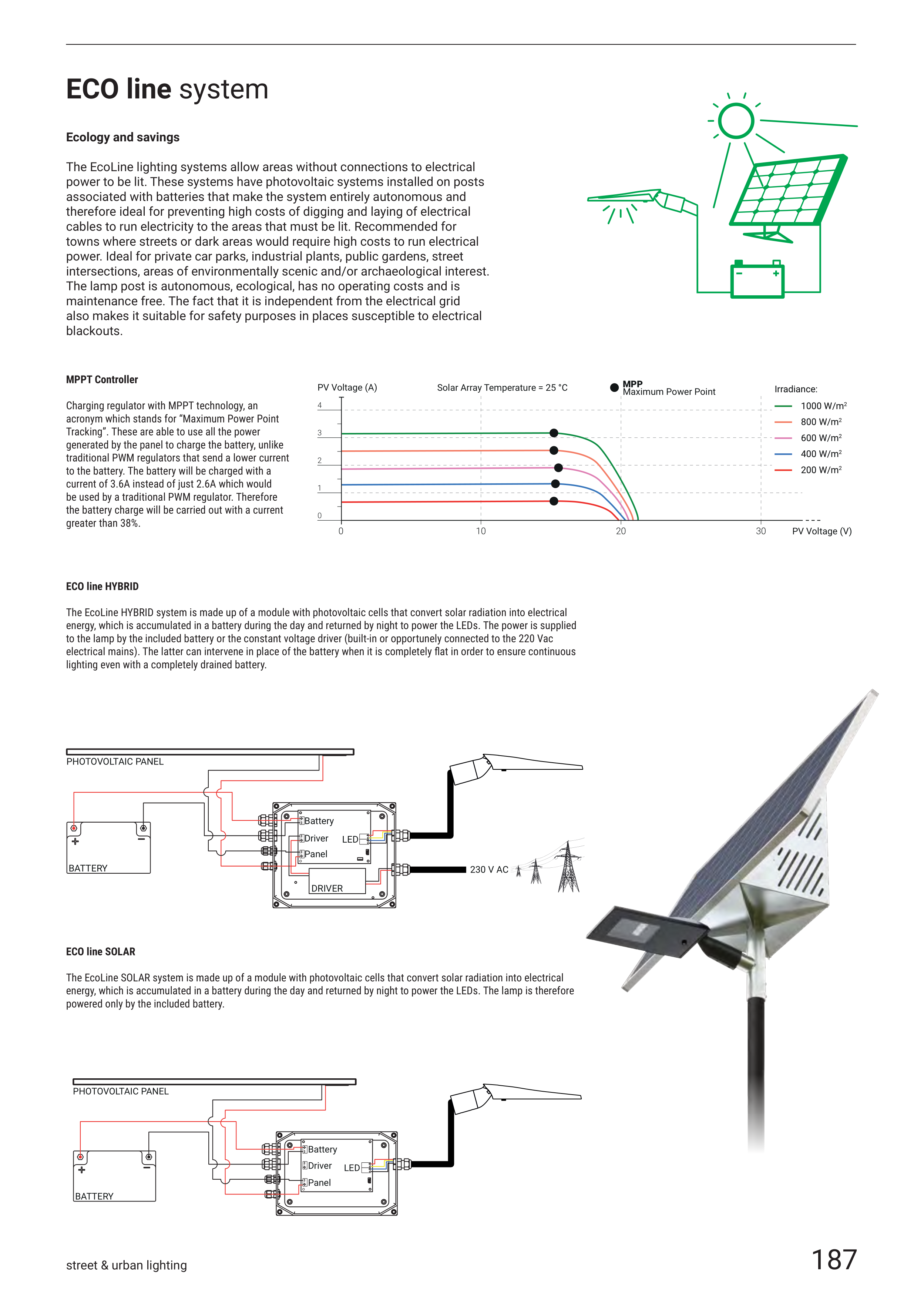187
street & urban lighting
ECO line system
10
20
30
0
PV Voltage (A)
PV Voltage (V)
4
3
1
2
0
Solar Array Temperature = 25 °C
MPP
Maximum Power Point
Irradiance:
1000 W/m2
800 W/m2
600 W/m2
400 W/m2
200 W/m2
PHOTOVOLTAIC PANEL
BATTERY
DRIVER
230 V AC
Battery
Driver
LED
Panel
PHOTOVOLTAIC PANEL
BATTERY
Battery
Driver
LED
Panel
Ecology and savings
The EcoLine lighting systems allow areas without connections to electrical
power to be lit. These systems have photovoltaic systems installed on posts
associated with batteries that make the system entirely autonomous and
therefore ideal for preventing high costs of digging and laying of electrical
cables to run electricity to the areas that must be lit. Recommended for
towns where streets or dark areas would require high costs to run electrical
power. Ideal for private car parks, industrial plants, public gardens, street
intersections, areas of environmentally scenic and/or archaeological interest.
The lamp post is autonomous, ecological, has no operating costs and is
maintenance free. The fact that it is independent from the electrical grid
also makes it suitable for safety purposes in places susceptible to electrical
blackouts.
ECO line HYBRID
The EcoLine HYBRID system is made up of a module with photovoltaic cells that convert solar radiation into electrical
energy, which is accumulated in a battery during the day and returned by night to power the LEDs. The power is supplied
to the lamp by the included battery or the constant voltage driver (built-in or opportunely connected to the 220 Vac
electrical mains). The latter can intervene in place of the battery when it is completely flat in order to ensure continuous
lighting even with a completely drained battery.
ECO line SOLAR
The EcoLine SOLAR system is made up of a module with photovoltaic cells that convert solar radiation into electrical
energy, which is accumulated in a battery during the day and returned by night to power the LEDs. The lamp is therefore
powered only by the included battery.
MPPT Controller
Charging regulator with MPPT technology, an
acronym which stands for “Maximum Power Point
Tracking”. These are able to use all the power
generated by the panel to charge the battery, unlike
traditional PWM regulators that send a lower current
to the battery. The battery will be charged with a
current of 3.6A instead of just 2.6A which would
be used by a traditional PWM regulator. Therefore
the battery charge will be carried out with a current
greater than 38%.


